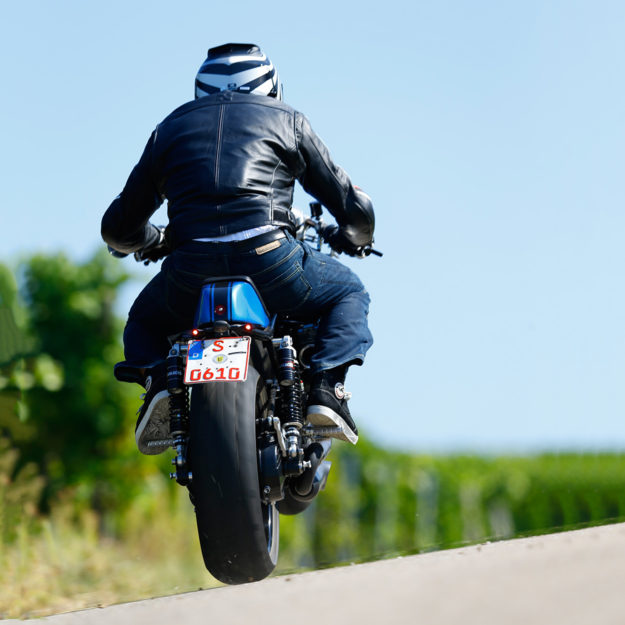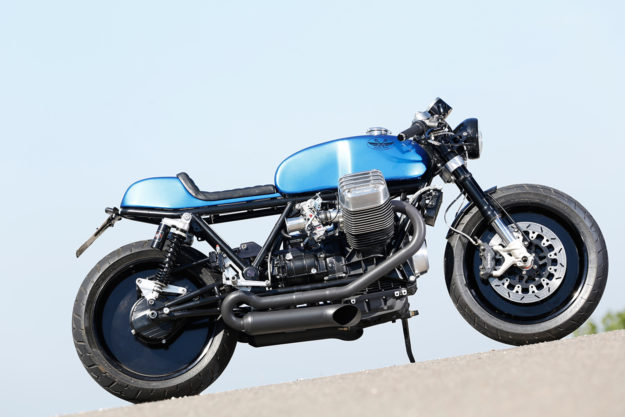
The meaning of ‘cafe racer’ has changed over the years. Back in the 1960s, it was mostly about performance. Today, half a century later, critics will say it’s more about style.
Definitions change over time, so we don’t lose much sleep over that. But if you hold fast to the original concept of a stripped down, hot-rodded bike, this is what you call a modern-day cafe racer.
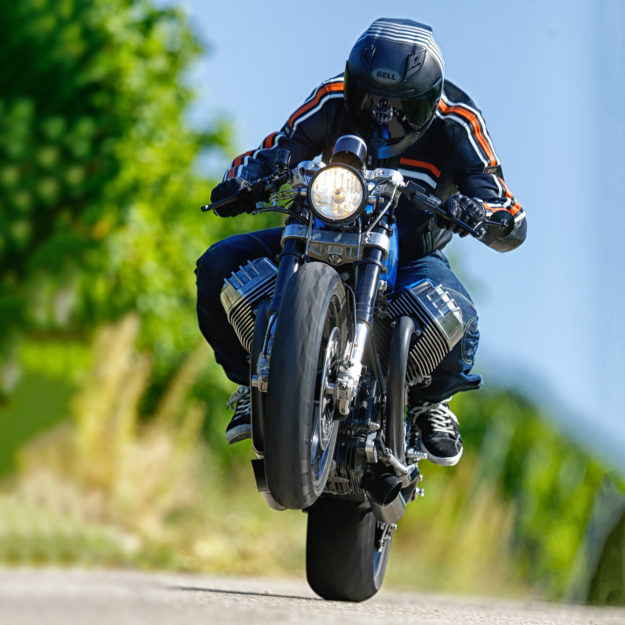
It’s the Radical Guzzi ‘Ristretto,’ a highly tuned Tonti-framed Guzzi. The builder is Stefan Bronold of Schwarzenfeld, a small town in Bavaria near the Czech border.
The price is steep at €45,000 ($50,000), but three have already been sold. That’s partly down to Radical Guzzi’s reputation in Europe, and partly down to the extraordinary level of custom engineering that has gone into this bike.
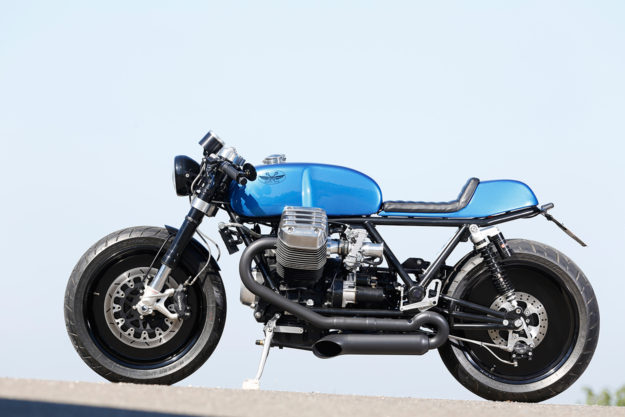
The ‘Ristretto’ concept was developed with the help of Sylvain Berneron—the former BMW designer who now runs PRAËM, and creates custom moto concepts under the Holographic Hammer brand.
Berneron penned a slim, classic silhouette to showcase the mighty V-twin. Radical Guzzi have taken that ball and run with it, adding a hefty slab of horsepower and handling dynamics worthy of the 21st century.
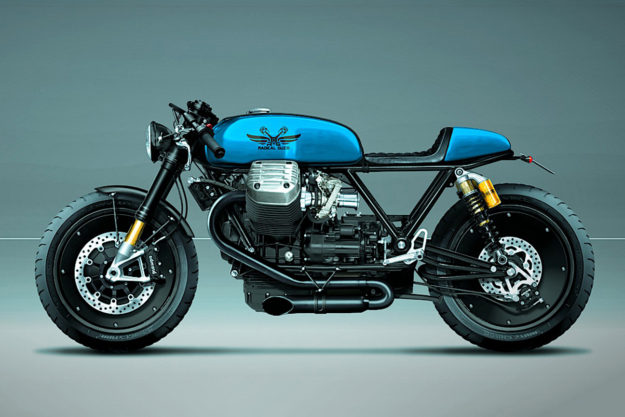
“The goal was to take the Moto Guzzi cafe racer to the next level,” says Radical collaborator Kris Karathomas.
“To cross the line of 100 horsepower and the torque typical of a two-valve engine. The logical consequence was to implant a 4-valve engine into the Tonti frame.”
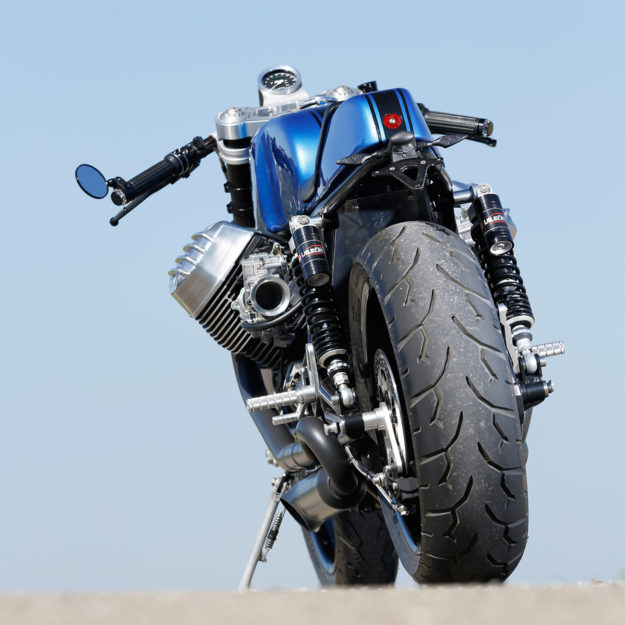
The outcome is the most extreme build from Radical Guzzi so far, hence the name Ristretto—the strongest coffee you can order in Italy, and twice as strong as a regular espresso.
The powerplant is sourced from Moto Guzzi’s 1200 cc Griso—but with the larger pistons and cylinders from the 1400 California. Specifications vary according to customer requirements, but hotter cams and Keihin 41mm FCR carbs are usually specified.
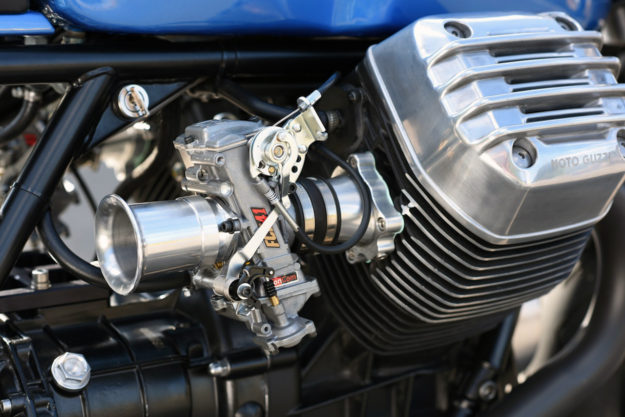
This boosts engine output to 130 horsepower and 112 ft.-lb. of torque. To put that into perspective, the stock California pumps out 96 horsepower and 89 ft.-lb.
Even more pertinent is the weight: Ristretto tips the scales at just under 200 kilos (440 pounds) with a full tank, while the California is 336 kilos.
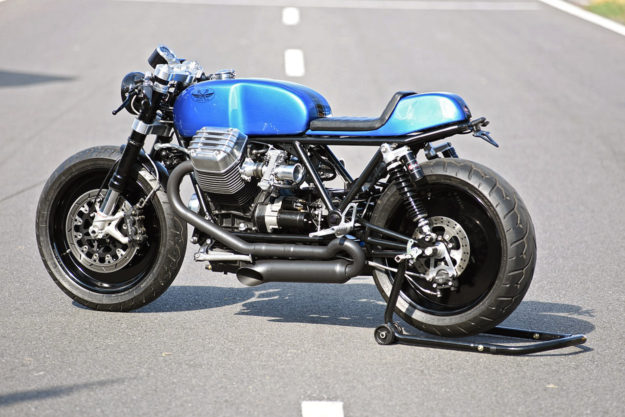
If that power-to-weight ratio is not good enough for you, Radical Guzzi can bore the engine out from 1380 to 1450 cc. And a 1700 cc version is due for release in September …
As the old cliché goes, power is nothing without control. So the suspension is state-of-the-art and fully adjustable. The front end is from the MV Agusta F4, with 58 mm Marzocchi forks.
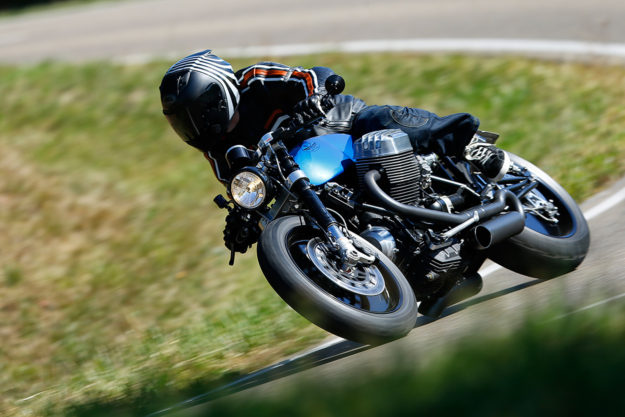
At the back, you can choose from Öhlins or Wilbers shocks, and wheels are 18 inches both front and rear—shod with Pirelli Night Dragon rubber. The brake systems are from Brembo or Behringer.
The frame is Moto Guzzi’s classic Tonti design, which is still in production today. But the Ristretto features a hand-built replica for guaranteed strength, with a very friendly seat height of just 760 millimeters (30 inches).
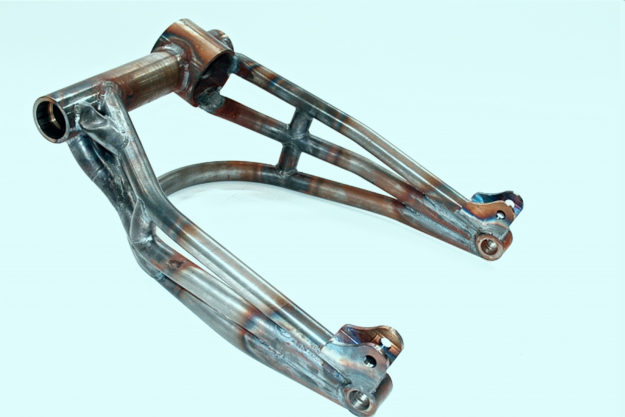
Moto Guzzis are rarely prone to ‘shaft jacking.’ But given the Ristretto’s high engine output, builder Stefan Bronold decided not to takes any chances. He’s designed and fitted a tubular-framed swingarm with more torsional stiffness than a factory original.
You get a choice of two wheels: conventional spoked items, or the striking solid disc wheels shown here—forged from aluminum, and made by RevTech.
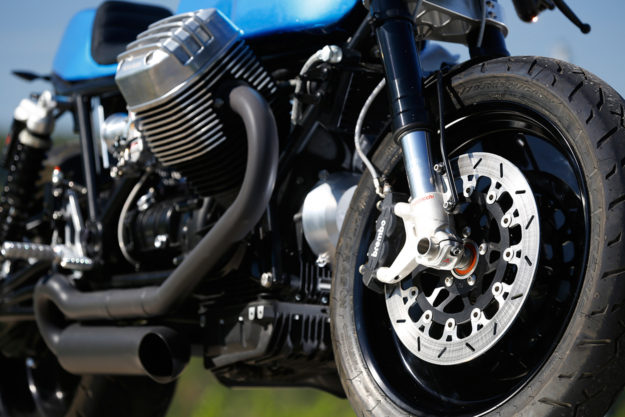
“With the disc wheels, the Ristretto runs as straight a freight train,” says Karathomas. “The mass of the wheels stabilizes the stiff frame even more. But the models with spoked wheels are definitely more agile and light-footed.”
Like the café racers piloted by Ton-Up Boys, this machine is designed for short, high-speed trips. You’re stretched out over the 20-liter tank, and the rearsets are positioned high. It is, as Bronold says, a “pure bred café racer.”
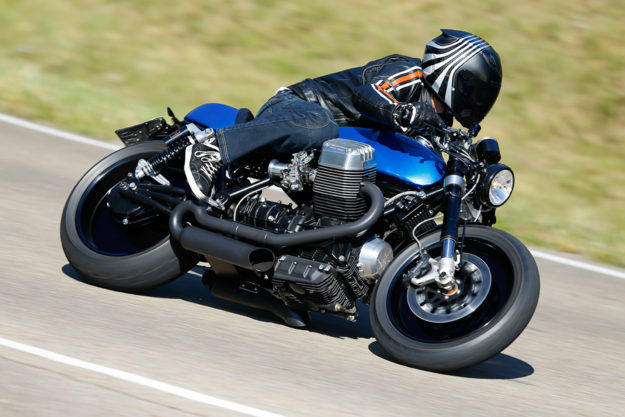
Bronold’s work has attracted the attention of Piaggio, Moto Guzzi’s holding company. Ideas were recently traded during a face-to-face meeting, so hopefully we’ll see elements of this machine in future production bikes.
Are these the kind of Moto Guzzis that Piaggio should build? Well, Aprilia is Piaggio’s designated performance brand these days. But we’d say yes, anyway.
If only because economies of scale would bring that price down …
